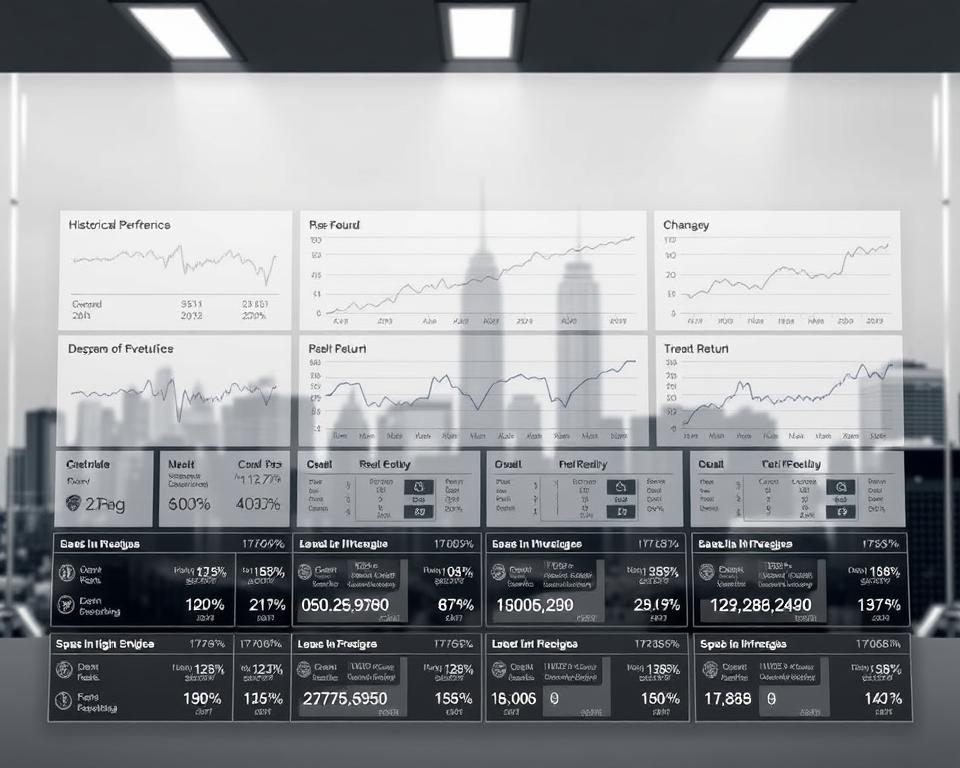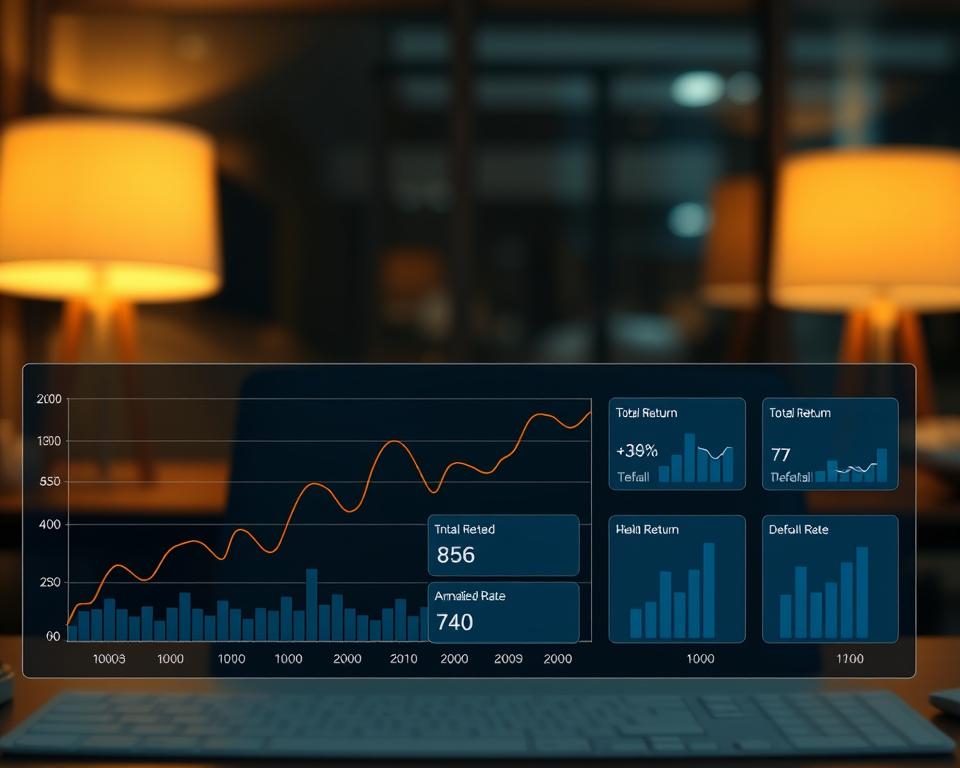Investing in CLO Equity Funds: Key Insights
Have you ever wondered how collateralized loan obligation funds affect your portfolio? With institutional allocations increasingly favoring CLO equity funds, understanding their unique advantages is essential. They offer compelling yields and diversification, appealing to experienced private bankers and institutional players alike. In this article, we explore the key features of investing in CLO funds, showcasing their strong quarterly payouts and adaptability to various market environments. Get ready to learn about the vital function CLOs serve in modern investing.
CLO Equity Explained
The equity slice in a CLO structure is known as CLO equity. CLOs are vehicles built around pools of leveraged loans. Investors in this field can find opportunities for solid returns with a manageable risk profile. They attract advanced investors aiming for elevated returns within a structured framework.
What is CLO Equity?
CLO equity is the junior-most tranche in the CLO structure. This tranche takes initial losses yet reaps substantial gains if the underlying loans succeed. Comprehending CLO equity involves appreciating its distinctive balance of risk and reward. While risk is elevated, so too is the potential for outsized returns. Hence, CLO equity funds remain appealing. They provide loan diversification that can enhance aggregate yields.

Mechanics of CLO Equity Funds
These funds aggregate investments to purchase a diversified pool of leveraged loans. They follow strategies like overcollateralization tests before distributing cash. This ensures payments go to debt holders first, then to equity investors. The waterfall structure aligns risk and potential return, appealing to investors seeking high performance with risk controls.
Why Investors Choose CLO Equity Funds
Investors seeking robust yields often favor CLO equity funds. With histories of double-digit performance, they stand out among alternative assets. Their unique financial structure offers benefits not found in traditional investments.
Double-Digit Return Potential
The track record of two-digit returns draws many investors to CLO equity. This success stems from the focus on high-yield assets within CLOs. By carefully managing loan portfolios, CLO managers can create significant value. This results in substantial annualized returns for investors.
Early Cash Flow Advantages
The front-loaded cash flow nature of CLO equity funds is another major draw. Unlike private equity, which often requires long waits for distributions, CLO equity funds offer quick cash distributions. Investors can expect distributions approximately five to six months post-closing. Early returns improve capital recovery prospects and cushion downside exposure.
CLO Equity Funds Investing: Key Characteristics
CLO equity funds stand out due to their unique features. One key aspect is their low correlation with other assets. As such, they serve as effective portfolio diversifiers. This benefit is pronounced during market downturns when correlations spike elsewhere.
Independence from Stocks and Bonds
CLO equity funds move independently of stocks and bonds. This independence helps reduce risk in a diversified portfolio. During equity drawdowns, CLO equity cash flows may remain intact. This stability helps investors keep their portfolios balanced and risk levels down.
Steady Income amid Volatility
Cash flow stability is another hallmark of CLO equity funds. They maintain distributions even in turbulent market conditions. The structure of CLOs, like overcollateralization, helps maintain this stability. As a result, investors enjoy regular payouts, reinforcing confidence.
Diversification Benefits of CLO Equity Funds
They play a vital role in broadening portfolio exposures. They allow investors to expand their exposure across various industries and navigate through different market cycles. By incorporating CLOs into their strategies, individuals can effectively reduce overall risk. This asset class has unique cash flow characteristics that serve as a buffer during economic downturns.
Diversifying across Economic Environments
Including CLOs extends exposure to both cyclical borrowers and defensive industries. The underlying leveraged loans, which include diverse borrowers, make CLOs an attractive risk-spreading tool. Investors benefit from both income generation and stability through:
- Income diversity: Multiple cash flow sources from different sectors.
- Risk management: Ability to offset losses in other asset classes during market volatility.
- Economic resilience: CLOs’ cash flow profiles adjust according to economic conditions.
Blending with Traditional Assets
CLO equity can complement stocks and bonds in a mixed portfolio. This integration enhances performance metrics while maintaining a balanced risk profile. It offers potential upside without concentrating risk. Together, these assets support sustainable portfolio growth.
CLO Management Strategies
Manager expertise is critical to CLO performance. They use their knowledge to make strategic choices that match the current market. Such active management aims to enhance yields and manage credit dynamics.
Active Management Strategies
Managers employ multiple tactics to drive returns. They monitor credit trends and reallocate positions accordingly. Some key strategies are:
- Dynamic trading to seize market chances.
- Rigorous credit analysis to select optimal loans.
- Portfolio rebalancing to keep the right asset mix.
Structural Protections in CLOs
These vehicles include structural features to shield investors. These safeguards ensure the CLO’s integrity and value, even in uncertain times. Key protections include:
- Regular overcollateralization tests.
- Waterfall payment structure securing equity cash flows.
- Credit enhancement triggers for adverse scenarios.
Active strategies plus structural buffers work to mitigate risks. This approach helps increase returns for investors, making CLO equity funds a solid investment choice.
Risk Factors in CLO Equity Investments
Awareness of key risk drivers is crucial for CLO equity investors. Credit default and prepayment dynamics are central concerns. Knowing these factors helps investors make informed decisions that align with their goals.
Credit Default Risk
Credit risk is a critical factor in CLO equity investments. It stems from the chance that borrowers might default on their loans. This default can disrupt the cash flows to CLO equity holders. To manage this risk, investors should focus on selecting experienced CLO managers. Their expertise can significantly reduce credit risk.
Prepayment Risk
Loan prepayments add complexity to CLO equity investments. When borrowers repay their loans early, it can cause unpredictable cash flow interruptions. Such variations can alter the schedule of equity payouts. Awareness of prepayment profiles and flexible reinvestment plans help manage this risk.
Accessing CLO Equity Investments
Investors have several ways to get into CLO equity, each with its own benefits. Understanding each route ensures alignment with objectives and risk appetite.
Pooled CLO Equity Vehicles
Captive CLO equity funds are great for new or less-experienced investors. They offer a mix of investments from many people. This way, investors get a variety of CLOs managed by one expert. It’s easier and less work, yet it’s diversified and managed well.
Direct Deal-by-Deal Investments
Sophisticated investors can opt for deal-specific CLO equity stakes. This method lets investors pick specific deals in the CLO market. It’s more complex but can lead to better returns and more control over the portfolio.
Blended Credit Strategies
Hybrid credit vehicles often include CLO equity alongside other debt. They combine leveraged loans, corporate bonds, and other credit assets. The diversified blend may smooth returns and control volatility. Ideal for investors seeking broad credit exposure in one fund.
Anticipated CLO Equity Returns
Investors looking into CLO equity need to grasp the factors influencing its performance. Past performance indicates CLO equity can outperform many conventional assets. Interest rate movements and credit cycle dynamics play major roles in returns.
Review of Past Returns
Examining CLO equity’s past performance reveals a pattern of solid returns, mainly during stable economic times. It has outperformed various asset classes, making it an attractive option for investors. Quality underwriting and structural protections help dampen downturn impacts.
Market Trends Affecting CLO Returns
Ongoing credit conditions and rate trends shape CLO equity outcomes. Monitoring interest rate changes, corporate default rates, and economic cycles is critical. An increase in interest rates can impact loan performance in CLOs, while economic downturns can raise default rates. Staying abreast of market signals helps optimize entry and exit points.
Selecting CLO Management
Choosing the right CLO manager is key to successful CLO equity investments. Track record and tenure matter significantly. Investors should look for managers with a proven track record in handling complex markets and maximizing returns.
Value of Track Record
Veteran managers excel at credit selection and risk assessment. Their success in different economic cycles enables them to develop strategies that withstand market changes. A skilled manager’s ability to spot profitable opportunities is often linked to the fund’s overall success.
Evaluating Management Styles and Strategies
Review managers’ investment philosophies against your comfort level. Some managers focus on growth, while others aim to preserve capital. Clarity on approach aids in aligning performance goals and risk profiles.
Long-Term Outlook for CLO Equity Funds
The future of CLO equity funds looks bright, driven by trends in corporate financing and a growing demand for new credit solutions. Investors see a path for growth and profit as the financial world changes. Yet, challenges remain, like interest rate changes and economic uncertainty.
Emerging Growth Drivers
Indicators point to expanding opportunities in CLO equity. Important drivers include:
- Rising volume of leveraged loans
- Rising interest in alternative investment strategies
- Broadening credit opportunities in developing economies
These elements suggest a favorable environment for CLO equity managers to grow. New structuring innovations could broaden investor access. Resulting in greater market penetration for CLO equity offerings.
Risks on the Horizon
Despite the positive outlook, several challenges could affect investors. Factors that may impact cash flows include:
- Variable interest rates affecting borrowing costs
- Economic instability leading to increased credit defaults
- Shifts in credit environments demanding active management
To overcome these hurdles, investors should diversify and choose experienced managers. Being flexible in response to market changes can help investors take advantage of strong opportunities. This approach aids in cushioning unforeseen events.
In Closing
CLO equity investing offers attractive yields, portfolio diversification, and resilience. It’s essential for investors to grasp the unique aspects and structures of these funds. CLO equity funds are not just a choice; they are a way to improve portfolio management strategies.
Knowledge of structure, risks, and management drives success. This knowledge allows investors to maximize fund benefits. It helps in achieving strong returns and supports long-term financial goals.
Including CLO equity enhances portfolio strength and stability. In shifting markets, CLO equity maintains its appeal. It suits investors aiming to succeed across economic cycles.


